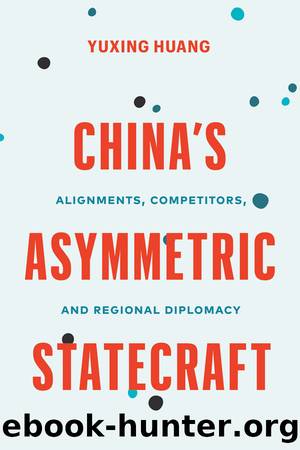China's Asymmetric Statecraft by Yuxing Huang

Author:Yuxing Huang
Language: eng
Format: epub, pdf
Publisher: University of British Columbia Press
Published: 2023-06-15T00:00:00+00:00
why is the US approaching us so desperately? ⦠In Southeast Asia, the US position is getting more difficult every day, particularly with respect to its troop withdrawal from Indochina. In the past, they turned to Soviet revisionists for help. In view of the current situation, [however,] it is impossible to solve problems without Chinese participation. They need us on this matter. This could be the first issue under discussion when they come to negotiate with us.139
Therefore, China needed to consider how to accommodate its Indochinese allies while trying to promote a strategic relationship with the United States. During Sino-American secret negotiations in July 1971, it adopted uniform strategies toward the DRV and Cambodia. To retain US credibility in the eyes of American allies, Kissinger stressed continued support to Nguyen Van Thieu of South Vietnam and Lon Nol of Cambodia. He also denounced the DRVâs military presence in South Vietnam and Cambodia. Zhou, on the other hand, was committed to regime change in South Vietnam and Cambodia and conducted an oral defence of the DRV.140 âSo long as the war does not cease, we will continue our support. This support is not only for the people of Vietnam, but also the people of Cambodia and Laos.â141 Despite these facts, the change in Sino-American relations made the DRV and Sihanouk skeptical about future Chinese support. On July 16, Beijing announced its invitation to President Nixon to visit China. In response, Hanoi publicly claimed through its official editorial that Washington would âtry to achieve a compromise between big powers in an attempt to make smaller countries bow to their agreements.â142 The editorial implicitly but clearly criticized the Chinese âagreementâ with the United States concerning the DRV. In private talks, Le Duan was more specific. He was most concerned âabout the recent diminishing of worldwide interest in the Vietnam War, resulting from the President [Nixon]âs impending trip to Beijing. He stated that [this] was the most important present problem in continuing the warâ and emphasized that âthere were a number of critical things he would like to say about the USSR and China, especially the latter, but he felt compelled to remain silent to avoid jeopardizing continued Soviet and Chinese aid without which North Vietnam could not continue to fight.â143 For his part, Sihanouk directly expressed to Chinese leaders his anger over the Sino-American rapprochement: âThe US is the Number One imperialist country. It wages aggressive [wars] everywhere! ⦠Why would China receive the president of such a country! What are you going to talk to him about?â144 During Nixonâs visit to China, Sihanouk paid a visit to Hanoi and published tough words there.
In view of these grievances, therefore, there was a real possibility that the DRV and Sihanouk might tilt toward the Soviet Union. In response, China avoided any selective strategies toward the allies. As Zhou argued privately, âfor the present, it is not appropriate to overpraise Vietnam; we should treat her as we do the other two nations [Cambodia and Laos].â145
Download
China's Asymmetric Statecraft by Yuxing Huang.pdf
This site does not store any files on its server. We only index and link to content provided by other sites. Please contact the content providers to delete copyright contents if any and email us, we'll remove relevant links or contents immediately.
| Central Asia | Southeast Asia |
| China | Hong Kong |
| India | Japan |
| Korea | Pakistan |
| Philippines | Russia |
The Sympathizer by Viet Thanh Nguyen(4279)
The Rape of Nanking by Iris Chang(4118)
World without end by Ken Follett(3409)
Ants Among Elephants by Sujatha Gidla(3381)
Blood and Sand by Alex Von Tunzelmann(3113)
Japanese Design by Patricia J. Graham(3088)
City of Djinns: a year in Delhi by William Dalrymple(2493)
The Queen of Nothing by Holly Black(2455)
Foreign Devils on the Silk Road: The Search for the Lost Treasures of Central Asia by Peter Hopkirk(2416)
India's Ancient Past by R.S. Sharma(2386)
Inglorious Empire by Shashi Tharoor(2383)
Tokyo by Rob Goss(2359)
In Order to Live: A North Korean Girl's Journey to Freedom by Yeonmi Park(2323)
Tokyo Geek's Guide: Manga, Anime, Gaming, Cosplay, Toys, Idols & More - The Ultimate Guide to Japan's Otaku Culture by Simone Gianni(2301)
India's biggest cover-up by Dhar Anuj(2295)
The Great Game: On Secret Service in High Asia by Peter Hopkirk(2279)
Goodbye Madame Butterfly(2187)
Batik by Rudolf Smend(2082)
Living Silence in Burma by Christina Fink(2022)
